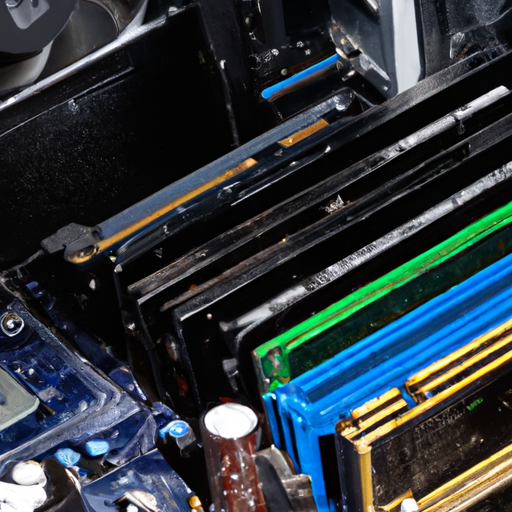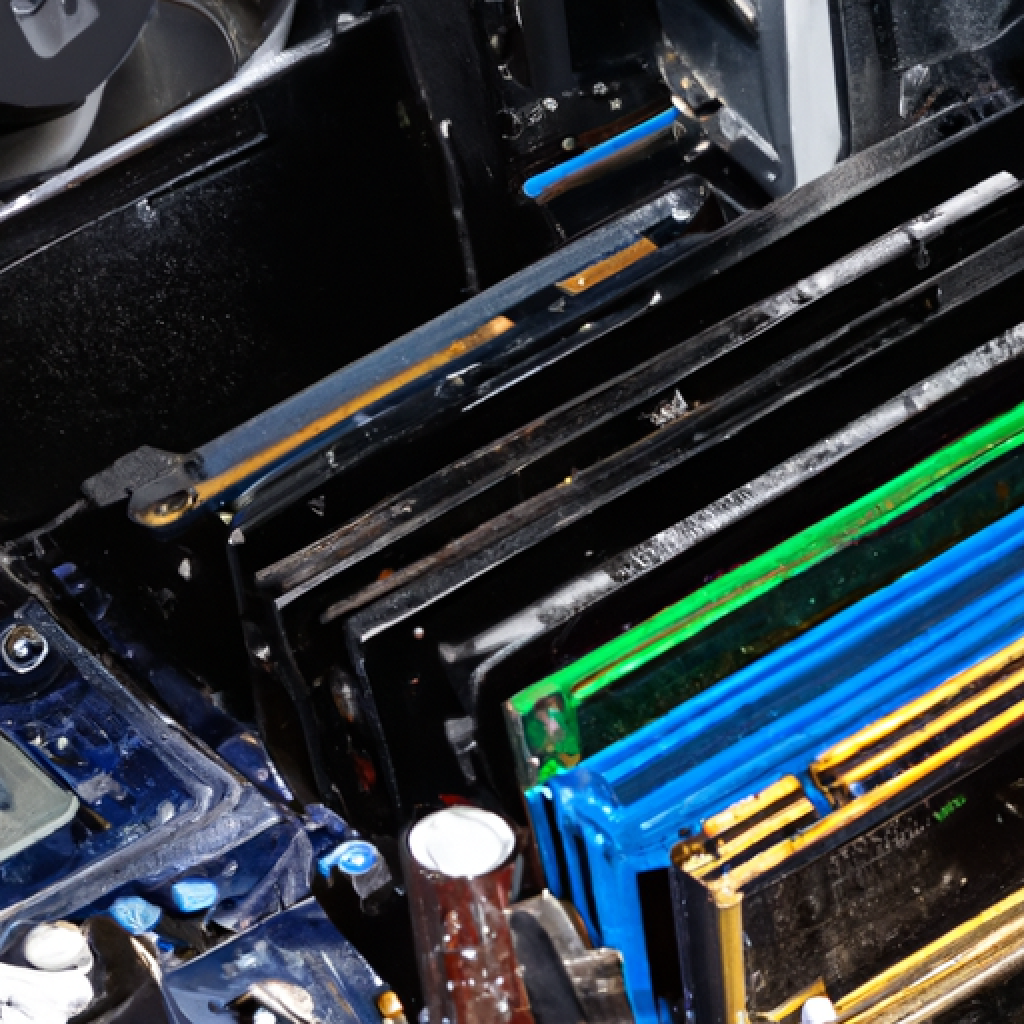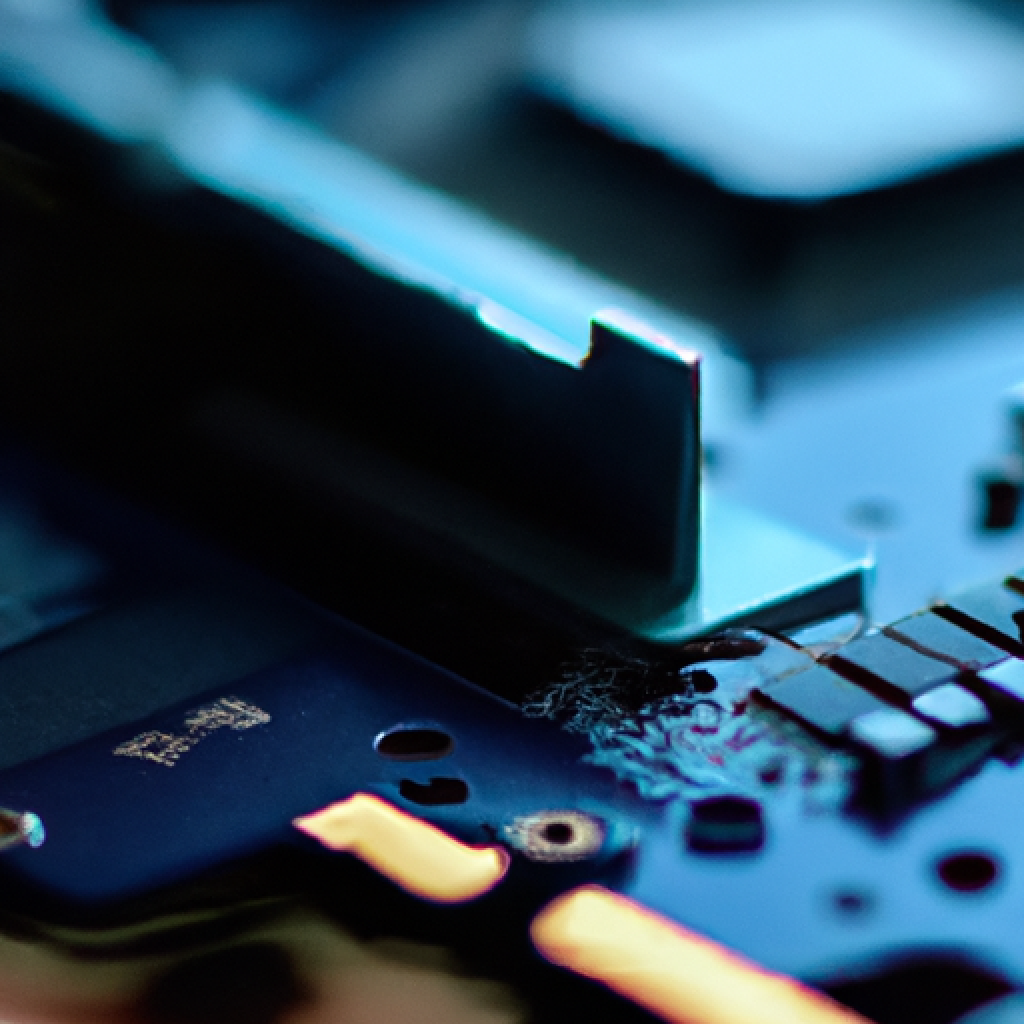How Much RAM For Gaming?

I’ve always been a gaming enthusiast, constantly looking for ways to upgrade my gaming setup and improve my gaming experience. One aspect that often gets overlooked is the amount of RAM needed for optimal gaming performance. In this article, I will explore the question of how much RAM is actually necessary for gaming and delve into the factors that can affect this decision. So, if you’re wondering how much RAM you should have for your gaming needs, stick around and let’s find out together.
Understanding RAM and Its Importance
Definition of RAM
RAM, or Random Access Memory, is a type of computer memory that is used to store data that is being actively accessed by the computer’s processor. Unlike the computer’s hard drive, which is used for long-term storage, RAM is temporary and loses its data when the computer is powered off. RAM plays a crucial role in the functioning of a computer, especially when it comes to gaming.
Role of RAM in Gaming
When it comes to gaming, RAM is vital for providing the necessary resources for the smooth and efficient operation of games. It acts as a temporary storage space where data is quickly accessed and processed by the computer’s processor. This includes game assets, textures, maps, and other elements that need to be loaded and accessed in real-time during gameplay. The more RAM a computer has, the more resources it can allocate to running a game smoothly without any lag or stutter.
What Happens When RAM is Limited
If a computer has insufficient RAM, it can result in various issues during gaming. When the available RAM is limited, the computer may not be able to keep up with the demands of the game, leading to slowdowns, lags, and overall poor performance. Limited RAM can also lead to frequent game crashes and freezing, as the computer struggles to allocate resources efficiently. Additionally, insufficient RAM can cause the computer to overwork, leading to overheating and potential damage to the system.
Types of RAM and Their Impact on Gaming
DDR RAM
DDR RAM, short for Double Data Rate Random Access Memory, is one of the most common types of RAM used in gaming computers. It offers improved data transfer rates compared to older types of RAM, allowing for faster data access and processing. DDR RAM comes in different generations, such as DDR3, DDR4, and the newer DDR5, each offering increased speeds and improved performance.
In the gaming context, DDR RAM plays a crucial role in providing faster data transfer rates, enabling quicker loading of game assets and smoother gameplay. Upgrading to a higher generation DDR RAM can significantly improve game performance, especially for graphically demanding games with high-resolution textures and complex environments.
SDRAM
SDRAM, or Synchronous Dynamic Random Access Memory, is another type of RAM commonly used in gaming computers. SDRAM operates in synchronization with the computer’s system clock, allowing for more efficient data transfer. It is considered an older type of RAM compared to DDR RAM but is still capable of providing adequate performance for gaming purposes.
While SDRAM may not offer the same level of performance as DDR RAM, it can still handle less demanding games effectively. For casual gamers or those on a budget, SDRAM can be a viable option for gaming, especially when combined with a sufficient amount of RAM capacity.
SRAM
SRAM, or Static Random Access Memory, is a type of RAM that is commonly found in the computer’s CPU cache. Unlike DDR or SDRAM, SRAM is faster and more expensive, making it unsuitable for large-scale use in gaming systems. SRAM is mainly used for high-speed cache memory, which aids in the fast retrieval of frequently accessed data.
In the gaming context, while SRAM is not directly used as the main system memory, its presence in the CPU cache can result in improved gaming performance. The faster access to data provided by SRAM allows for quicker retrieval of instructions and game data, reducing potential bottlenecks and enhancing overall gameplay.
Comparative Effects on Game Performance
When it comes to the impact on game performance, the type of RAM used can have varying effects. DDR RAM, with its higher data transfer rates, generally provides better performance compared to SDRAM. DDR RAM’s ability to handle larger amounts of data at faster speeds makes it ideal for modern gaming, especially for graphically intensive games.
On the other hand, while SDRAM may not match the performance of DDR RAM, it can still deliver satisfactory results for less demanding games. The slower data transfer rates of SDRAM may result in slightly longer loading times, but it should not significantly impact gameplay in casual or older games.
SRAM, despite its fast access speeds, does not directly impact gaming performance since it is mainly used in the CPU cache. However, its presence can indirectly benefit performance by reducing latency and enhancing data retrieval within the processor.

Determining the Right Amount of RAM for Games
Minimum RAM Required for Gaming
To ensure a smooth gaming experience, it is important to have the minimum required amount of RAM recommended by the game developers. The specific minimum RAM requirements will vary depending on the game, but generally, 8GB of RAM is considered the minimum for most modern games. However, it is important to note that this is the bare minimum and may not provide optimal performance for more demanding titles.
Ideal RAM for Gaming
For optimal gaming performance, it is recommended to have at least 16GB of RAM. This allows for smoother gameplay, especially in graphically intensive games that require ample resources. With 16GB of RAM, the computer has more headroom to handle game assets, textures, and other data without the risk of running out of memory.
Maximum RAM for Gaming
While there is no definitive maximum limit for RAM in gaming, the practical upper limit for most gamers is around 32GB. Going beyond this limit generally does not provide significant performance improvements for gaming alone. However, certain scenarios such as content creation or running resource-intensive applications alongside gaming may benefit from higher amounts of RAM.
The Impact of Insufficient RAM on Gaming
Lags and Stutters
One of the most common effects of insufficient RAM in gaming is experiencing lags and stutters during gameplay. When the available RAM is limited, the computer may struggle to load and process game assets in real-time, resulting in noticeable delays and frame rate drops. This can significantly impact the overall gaming experience, making it frustrating and less enjoyable.
Crashing Games
Insufficient RAM can also lead to frequent game crashes. When a game requires more memory than what is available, the computer may fail to allocate the necessary resources, causing the game to crash or freeze. This can disrupt the gameplay flow and force the player to restart the game, potentially losing progress or save data in the process.
Overheating System
When the system’s RAM is limited, the computer’s processor and other components may have to work harder to compensate for the lack of resources. This increased workload can lead to higher temperatures and potential overheating of the system. Overheating can cause stability issues, decreased performance, and even hardware damage if left unaddressed. Sufficient RAM can help alleviate the strain on the system, reducing the risk of overheating.

The Result of Excessive RAM on Gaming
Unused Resources
Having excessive RAM beyond what is necessary for gaming can result in unused resources. If the game does not utilize the available RAM capacity, the additional memory remains idle, not contributing to performance or enhancing the gaming experience. This means that investing in excessive RAM beyond the practical limit may not provide any noticeable benefits for gaming alone.
Increased Costs
Excessive RAM also comes with increased costs. Higher RAM capacities often mean added expenses, and investing in excessive amounts of RAM that go unused can be viewed as wasteful spending. It is important to strike a balance between having enough RAM for optimal gaming performance and avoiding unnecessary costs associated with excessive RAM.
Possible System Instability
While excessive RAM may not directly cause system instability, there is a possibility of compatibility issues. Some games or applications may have difficulty operating with an abundance of RAM, leading to unexpected crashes or errors. It is essential to ensure that the system’s hardware, including the motherboard and operating system, can handle the larger RAM capacity to avoid potential stability problems.
How to Check Your Current RAM for Game Compatibility
RAM Usage Monitoring
To determine if your current RAM is sufficient for gaming, you can monitor your RAM usage during gameplay. Operating systems such as Windows provide built-in tools that allow you to monitor resource utilization, including RAM. By observing the RAM usage while playing games, you can assess if you are hitting the limit or if there is room for improvement.
Game Requirements Check-Up
Another method to assess your RAM compatibility with games is to check the recommended system requirements provided by the game developers. These requirements usually specify the minimum and recommended RAM amount needed for smooth gameplay. By comparing these requirements with your current RAM, you can determine if an upgrade is necessary.
How to Upgrade RAM if Necessary
If you find that your current RAM is insufficient for optimized gaming performance, upgrading your RAM is relatively straightforward. The first step is to identify the type of RAM your system supports, such as DDR3 or DDR4. Once you know the compatible RAM type, you can purchase additional RAM modules and install them in the available slots on your motherboard. It is recommended to consult your system’s manual or seek professional assistance if you are unsure about the installation process.

RAM Vs Other Factors Affecting Game Performance
RAM Vs CPU
While RAM and the CPU (Central Processing Unit) are both critical components for gaming, they serve different functions. RAM provides the necessary temporary storage for game data, while the CPU handles the processing of instructions and calculations. Both RAM and the CPU work together to ensure smooth gameplay, and an imbalance between the two can lead to performance issues. However, if forced to choose between upgrading RAM or the CPU for gaming purposes, it is generally recommended to prioritize RAM, especially if the CPU meets the game’s minimum requirements.
RAM Vs GPU
The GPU (Graphics Processing Unit or graphics card) is responsible for rendering and displaying the visuals in games. RAM and the GPU work together to provide an immersive gaming experience. Insufficient RAM can limit the GPU’s ability to process and load textures and other graphical assets, leading to reduced visual quality or stuttering. Upgrading both RAM and the GPU can result in significant performance improvements for graphically demanding games.
RAM Vs Hard Drive Speed
While the speed of the computer’s hard drive affects overall system performance, it is not directly comparable to the impact of RAM on gaming. RAM provides faster access to data during gameplay, reducing loading times and improving responsiveness. Hard drive speed, on the other hand, affects how quickly games and game assets are loaded from storage. While upgrading to a faster hard drive can reduce loading times, it does not directly address the need for sufficient RAM capacity for efficient data processing during gameplay.
RAM Considerations for Different Types of Games
RAM for MMOs
Massively Multiplayer Online (MMO) games tend to be more demanding in terms of resource requirements due to their large open worlds and numerous players interacting simultaneously. For MMOs, it is recommended to have at least 16GB of RAM to ensure smooth gameplay, especially during crowded player events or large-scale battles. The additional RAM capacity helps handle the increased data load associated with MMOs, such as rendering multiple player characters and complex environmental details.
RAM for Single-Player Games
Single-player games typically have less demanding RAM requirements compared to MMOs or online multiplayer games. For most single-player games, 8GB of RAM is sufficient to run them smoothly. However, to future-proof your system and handle more graphically advanced single-player games, opting for 16GB of RAM is recommended. This allows for better performance and ensures a stable gaming experience without potential memory-related issues.
RAM for Online Multiplayer Games
Online multiplayer games, similar to MMOs, often require more system resources due to the need to interact with other players in real-time. For these games, it is advisable to have a minimum of 8GB of RAM. However, to ensure a seamless multiplayer experience, especially in games with intensive graphics or large player counts, upgrading to 16GB or more is recommended. The additional RAM allows the computer to handle the increased data exchange and processing required for online multiplayer gameplay.

Cost-Benefit Analysis of RAM for Gaming
Investment in High-End RAM Vs Game Performance
Investing in high-end RAM beyond what is necessary for gaming performance alone may not provide a significant return on investment. While high-end RAM may offer additional features or higher clock speeds, these benefits may not translate into noticeable gameplay improvements. It is crucial to consider the cost-effectiveness of high-end RAM and whether the associated features are worth the additional expense.
Diminishing Returns on Excessive RAM
As mentioned earlier, there is a practical upper limit for RAM in gaming. Going beyond this limit results in diminishing returns, where the additional RAM does not provide significant performance benefits for gaming purposes alone. It is important to strike a balance between having enough RAM for optimal performance and avoiding unnecessary expenses associated with excessive RAM.
Ongoing Costs Like Upgrades and Maintenance
Upgrading RAM or any other component in a computer incurs costs beyond the initial investment. As technology continues to advance, game requirements change, and future upgrades may be necessary to meet evolving demands. It is essential to consider the ongoing costs of upgrades, maintenance, and compatibility when making decisions regarding RAM for gaming. Allocating a budget for regular upgrades ensures that your system remains capable of handling future game releases.
Future Trends in RAM Requirements for Gaming
Increasing RAM Requirements
As game developers continue to push the boundaries of graphics, physics, and overall game complexity, RAM requirements are expected to increase. With the advent of more realistic graphics, higher-resolution textures, and more immersive worlds, games will demand greater amounts of RAM to ensure optimal performance. It is crucial to keep an eye on game developers’ recommended system requirements to stay ahead of the curve and ensure that your system remains capable of handling future game releases.
Advancements in RAM Technology
RAM technology continues to advance, with newer generations offering increased speeds and higher capacities. The transition from DDR3 to DDR4 and now, the emergence of DDR5, showcases the ongoing efforts to enhance performance and efficiency. Advancements in RAM technology can result in improved gaming experiences, with faster data transfer rates and larger memory capacities enabling smoother gameplay and more immersive environments.
Projecting Future Game Performance Needs
As technology progresses, it becomes increasingly important to project future game performance needs. Game developers and hardware manufacturers work hand in hand to provide optimal gaming experiences, and understanding the trends and demands in the gaming industry can help guide decisions regarding RAM and other hardware upgrades. Staying informed about upcoming game releases, advancements in technology, and system requirements will ensure that you are prepared to meet future gaming performance needs.
In conclusion, RAM plays a critical role in gaming, providing the necessary temporary storage for game data and ensuring smooth and efficient gameplay. The type and amount of RAM in a gaming system can significantly impact game performance, with insufficient RAM leading to lags, crashes, and potential system overheating, while excessive RAM may result in increased costs and unused resources. Determining the right amount of RAM for gaming involves considering the system requirements of different types of games and striking a balance between optimal performance and cost-effectiveness. Monitoring RAM usage, checking game requirements, and upgrading RAM if necessary are key steps in ensuring compatibility with the latest games. RAM’s role in gaming should also be considered in relation to other factors such as the CPU, GPU, and hard drive speed to achieve overall system optimization. By understanding current RAM requirements and anticipating future trends, gamers can ensure that their systems are ready to meet the demands of upcoming game releases and provide an enjoyable gaming experience.








